Related Research Articles
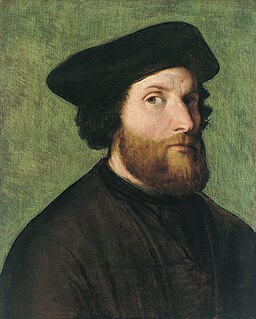
Lorenzo Lotto was an Italian painter, draughtsman, and illustrator, traditionally placed in the Venetian school, though much of his career was spent in other north Italian cities. He painted mainly altarpieces, religious subjects and portraits. He was active during the High Renaissance and the first half of the Mannerist period, but his work maintained a generally similar High Renaissance style throughout his career, although his nervous and eccentric posings and distortions represented a transitional stage to the Florentine and Roman Mannerists.

Guido Reni was an Italian painter of the Baroque period, although his works showed a classical manner, similar to Simon Vouet, Nicolas Poussin, and Philippe de Champaigne. He painted primarily religious works, but also mythological and allegorical subjects. Active in Rome, Naples, and his native Bologna, he became the dominant figure in the Bolognese School that emerged under the influence of the Carracci.

Nicolas de Largillière was a French portrait painter, born in Paris.

Alessandro Bonvicino, more commonly known as Moretto, or in Italian Il Moretto da Brescia, was an Italian Renaissance painter from Brescia, where he also mostly worked. His dated works span the period from 1524 to 1554, but he was already described as a master in 1516. He was mainly a painter of altarpieces that tend towards sedateness, mostly for churches in and around Brescia, but also in Bergamo, Milan, Verona and Asola; many remain in the churches they were painted for. Most are on canvas, but a number even of large ones are on wood panel. Only a handful of drawings survive.

Giovanni Ambrogio Figino was an Italian Renaissance painter from Milan.

Giuseppe Maria Crespi, nicknamed Lo Spagnuolo, was an Italian late Baroque painter of the Bolognese School. His eclectic output includes religious paintings and portraits, but he is now most famous for his genre paintings.

Livio Agresti (1508–1580), also called Ritius or Ricciutello, was an Italian painter of the late Renaissance or Mannerist period, active both in his native city of Forlì and in Rome, where he died. He was one of the members of the "Forlì painting school".

The collections of the Pinacoteca Comunale di Cesena, in Cesena, Italy, contain works by:
Cristoforo Serra (1600–1689) was an Italian painter of the Baroque period, active in Cesena.
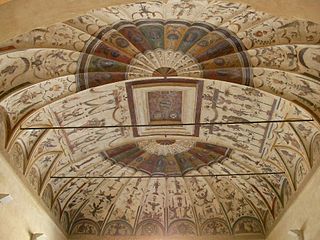
Marco Marchetti was an Italian painter of the late-Renaissance or Mannerist period. Born in Faenza, he is also known as Marco da Faenza. He painted an Adoration by the shepherds (1567) originally in the church of the confraternity of Santa Maria dell'Angelo, but now in the pinacoteca of Faenza. He also painted along with Giorgio Vasari a series of frescoes in the Palazzo Vecchio representing the Life of Hercules. He painted an altarpiece representing the Martyrdom of St. Catherine of Alexandria (1580) in the church of Sant'Antonio in Faenza.
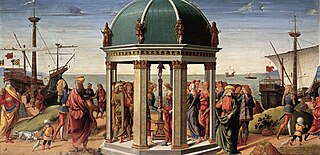
Biagio d’Antonio Tucci was an Italian Renaissance painter active in Florence, Faenza and Rome.
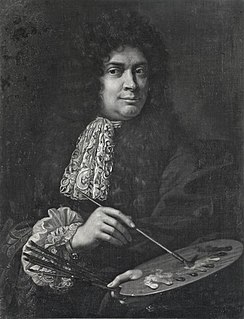
Benedetto Gennari II was an Italian painter active during the Baroque period.

Michele Gordigiani was an Italian painter, known best for his portraits.
Antonio Pio was an Italian painter, depicting history, literary themes, and genre pieces.
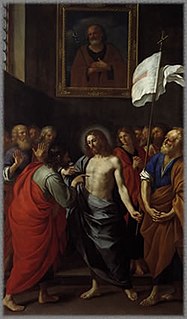
Bartolomeo Gennari was an Italian Renaissance painter.

Ercole Gennari was an Italian Renaissance drawer and painter.

Anselmo Gianfanti was an Italian painter known for depiction of genre subjects and portraits. He was born in Cesena. He was a pupil of Domenico Morelli. He painted the Benedicamus Domini in the National Gallery of Modern Art in Rome. He also painted a Frati miniatore and various portraits.
Giovanni Francesco Nagli was an Italian painter of the Baroque period. He was a follower of the style of Simone Cantarini and later of the prominent Baroque painter Guercino, who was born in Cento in what is now Emilia-Romagna. It is perhaps for this latter reason, Nagli as follower of Guercino, is called il Centino, despite being mostly active in Rimini from 1629 onward. He painted a Sant'Agostino at his desk, now in the Pinacoteca of Rimini. He painted a saint at the gallery of Cesena. He painted a Bambino killing a Dragon at San Francesco Saverio, Rimini. He painted an altarpiece depicting St Anthony of Padua preaching to the Fish, which was once the main altarpiece of the Church of the Theatines, Rimini

Portrait of an Old Man with Gloves is an oil on canvas painting by Lorenzo Lotto, signed "L. Loto" and dated to around 1543 due to stylistic similarities with Portrait of Febo da Brescia, Portrait of a Thirty-Seven-Year-Old Gentleman and other works produced by the artist in the mid 1540s. Its final private owner was count Castellane Harrach of Turin, from whose collection it entered the Pinacoteca di Brera in Milan in 1859, where it still hangs.

Tiburzio Passarotti or Passerotti was an Italian painter; primarily of religious subjects.
References
- ↑ Pinacoteca of Cesena Archived 2013-03-30 at the Wayback Machine , short painter biography.